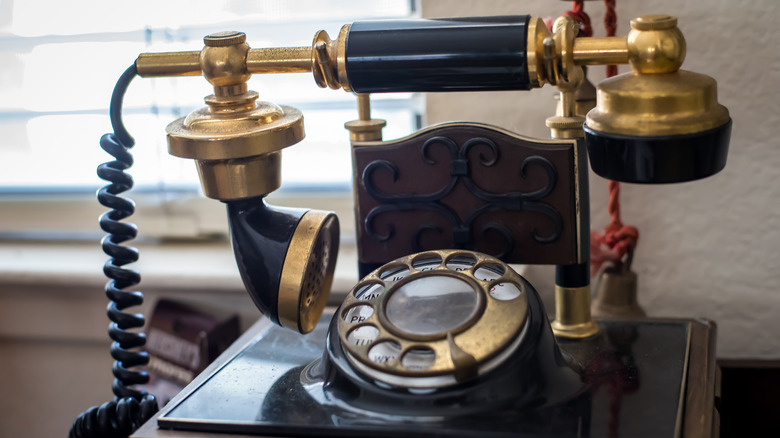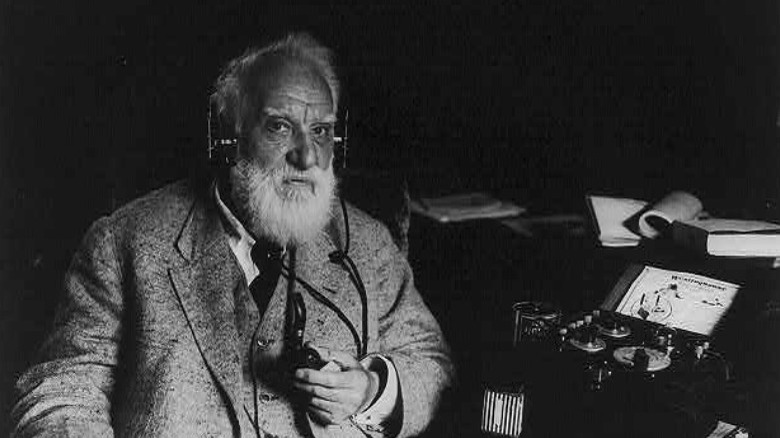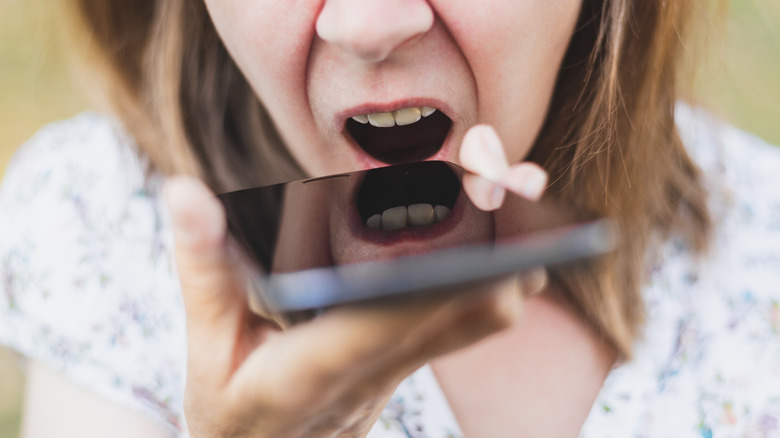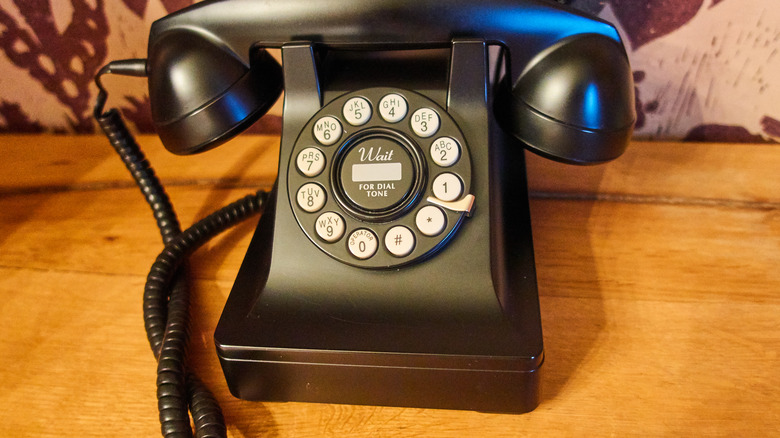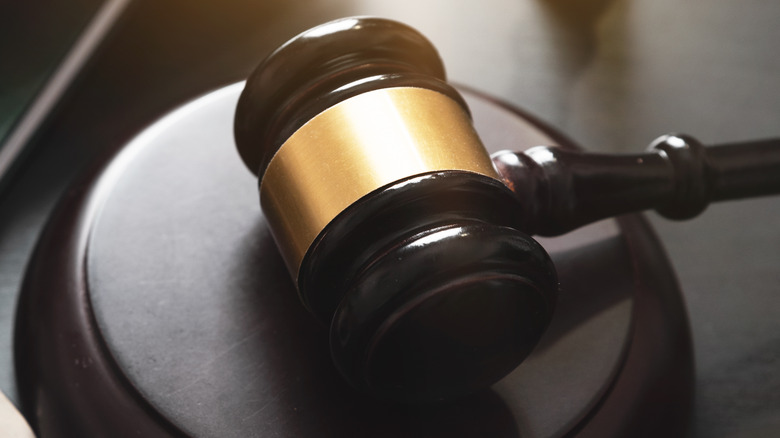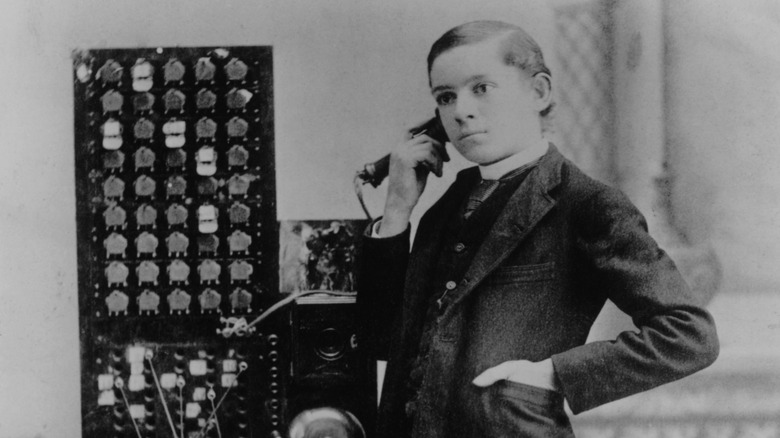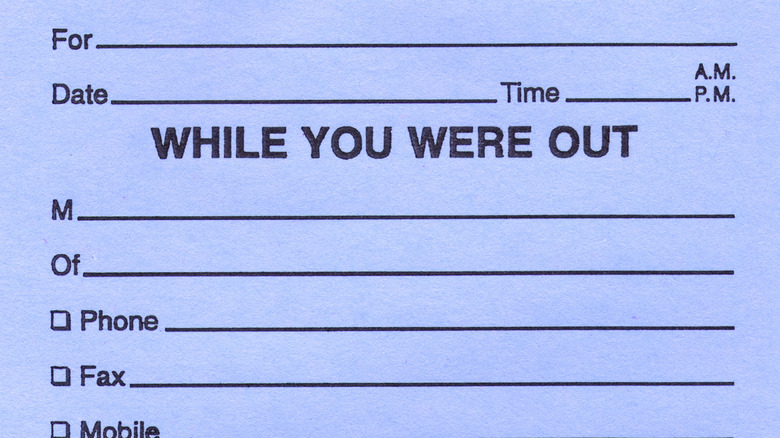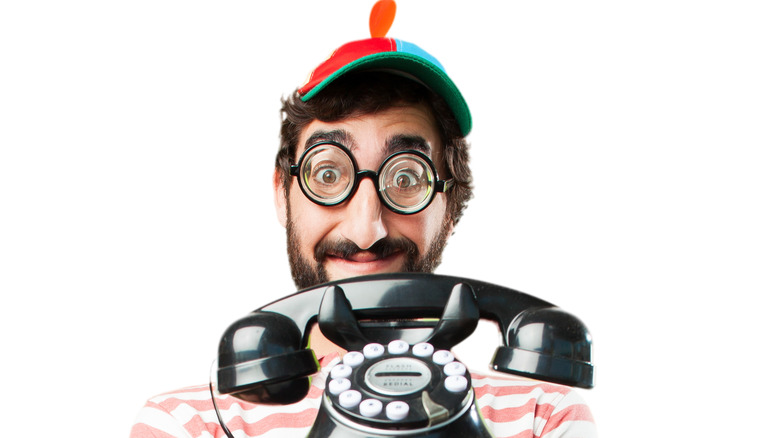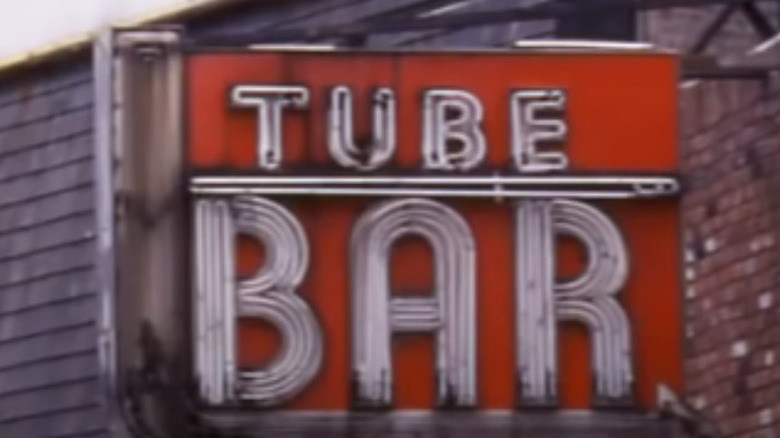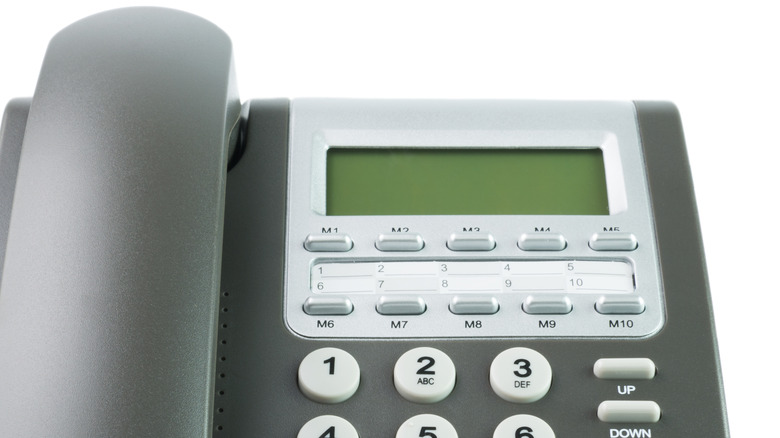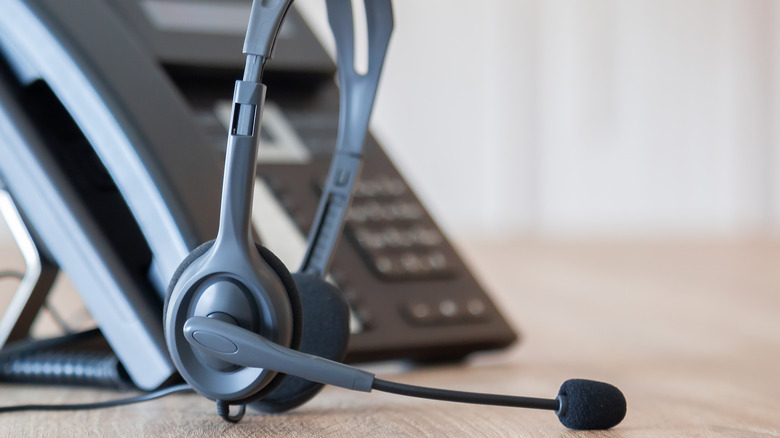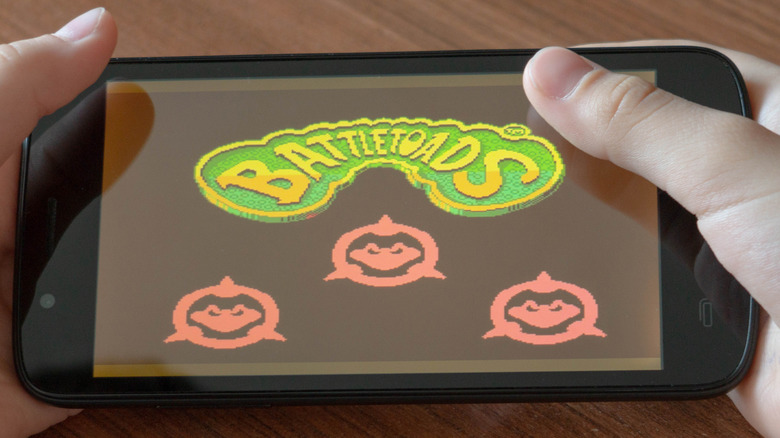The History Of Prank Calls Explained
Picture this: You're the president of a South American country, with many important matters on your plate and no time for tricks or tomfoolery. One day, you receive a phone call from someone identifying themself as your political ally, a leader of a different nation. The voice sounds exactly like the person, so you completely believe that you're actually talking to them. After the person asks about a telegram they sent to your office, you notice your conversation becoming increasingly nonsensical. Eventually, the ruse is revealed: You've actually been led on by a pair of radio presenters, who used recorded clips to make you think you were actually talking to your political ally. Your conversation abruptly ends when you hang up, likely still confused about what just transpired. That's exactly what happened to Venezuelan leader Hugo Chavez in 2003, who received a prank call from Miami and thought he was actually talking to Cuban president Fidel Castro (via BBC News).
Even in today's technologically advanced communications landscape, prank calling remains a thing. In fact, it still presents a problem in different parts of the world. For instance, the Trinidad & Tobago Guardian reports that in 2018, more than a million prank calls were made to the Trinidad and Tobago Police Services emergency hotline. Meanwhile, the Philippine government's emergency line received a staggering 2.54 million prank calls in 2019 (via INQUIRER.net).
In case you were curious about how the practice of prank calling started, here's the history of prank calls, explained.
The rise of the telephone
Contrary to what you may have learned in history class, the story of the invention of the telephone isn't as simple and straightforward as it may sound. While many credit Alexander Graham Bell as the inventor of the telephone, he was actually the first person to secure the United States patent for it back in 1876, per Elon University. Technically, one can say that the first telephone was created by Antonio Meucci, an Italian inventor who developed a "basic phone" in 1849. Another instrumental figure in telephony was Charles Bourseul, a French civil engineer who had some pretty impressive ideas about how a phone would work — two decades before Bell could build his own.
Regardless, it was Bell whose name had come to be associated with the telephone, and with good reason. Thirty-two years after the construction of the first telephone line in 1878, the number of phones in the telephone system Bell and his men built swelled to 5.8 million. It is said that by the 1920s, the majority of middle-class families had telephones at home, reports The Atlantic.
However, with the meteoric rise in popularity of the telephone came a brand-new pastime for naughty youngsters, most of whom were age 11 to 15: prank calling. As Marilyn Jorgensen wrote in a 1984 paper published in Western Folklore, because of how phones were regarded as serious business by adults, their children found them particularly easy to prank.
Why do people make prank calls in the first place?
Youth Law Australia provides a simple, straightforward definition for the term "prank call." Also called a hoax call or nuisance call, it is "a type of practical joke over the telephone." It's not surprising that some people may see prank calling as juvenile behavior, given how it's mostly adolescents who are known to participate in the activity (per The Atlantic). However, it does raise the question of how the idea came about, why it seems so appealing for a certain age range, and why anyone thought it would be a good idea in the first place.
A possible explanation behind the popularity of prank calling is that it is a "low-stakes rebellion," in a sense, notes The Atlantic. While a prank call (usually) doesn't do any real or lasting harm to its hapless victim, it does fill the young caller with a sense of satisfaction after being able to successfully bamboozle the adults who normally set the rules.
It also helps that a prank caller is unlikely to receive any form of serious retaliation from their victim. This means that prank calling is a useful outlet for exhibiting socially unacceptable behavior without any fear of severe consequences. The moment either party drops the call (typically with some colorful language from the victim), the prank caller can easily chalk it up as a victory.
The first prank call on record
Over the decades, prank callers have become increasingly creative with their trickery. They have been able to come up with a myriad of novel and entertaining ways to make their victims cringe, perform certain actions, or simply regret the time they wasted. One of the most famous prank call jokes is the classic refrigerator joke, in which the prank caller asks their victim if their refrigerator is "running" (via The Atlantic). Naturally, when the other person answers in the affirmative, the jokester follows it up with something along the lines of, "Well, you better catch it!" As you can probably tell, the success of a prank call hinges on clever or pun-tastic wordplay.
That said, as The Atlantic notes, it took eight years since the first telephone call before people realized that they could make long-distance trickery possible through a phone. In 1884, The Electrical World Magazine shared what may likely be the first ever prank call recorded in history: "Some malicious wag at Providence, R.I., has been playing a grave practical joke on the undertakers there, by summoning them over the telephone to bring freezers, candlesticks and coffins for persons alleged to be dead. In each case the denouement was highly farcical, and the reputed corpses are now hunting in a lively manner for that telephonist."
Are prank calls even legal?
While the notion of prank calling may appeal to your inner juvenile self, you may also want to consider the potential legal repercussions if you get caught, depending on where you live. In the U.S., for instance, the Telecommunications Act, 47 U.S.C. § 223(a)(1) applies to prank callers if the calls they made were out of a desire to "abuse, threaten, or harass" the person on the other line (per Cornell Law School).
In response to a reader's question on the legality of prank calling, Manhattan Beach attorney Ron Sokol wrote the following for the Daily Breeze: "Under the California Penal Code, certain kinds of 'pranks” can rise to the level of a misdemeanor, result in a fine of up to $1,000, and as much as six months in county jail." Sokol also clarified that under Section 653m, two types of conduct are prohibited: calls that feature "obscene language" or threats to a person, their relatives, or their possessions, and calls that are repeatedly done with the specific intent of harassing or annoying their target.
Prank calls from telephone company employees
One would assume that aside from the victims of prank callers, operators and other employees of telephone companies would be the ones who are most annoyed and inconvenienced by this kind of telephone trickery. After all, a telephone company wouldn't want its bread and butter to be mired in controversy, right? Well, think again — because back in the day, some of the most infamous prank callers were actually the teenage boys that worked in the industry.
As The Atlantic details, in a decision driven mainly by the desire to increase its profit margins, Bell Telephone hired young boys to work as phone operators starting in 1878. Apparently, the thinking was that having younger employees would mean efficient output for minimal pay. After all, as another Atlantic article notes, the extent of the work involved a team of up to six people plugging switches into switch boards throughout the day, which is exactly the kind of task that energetic youngsters should be able to do with ease. What the company didn't count on, however, was that juvenile workers typically came with an equally juvenile sense of humor.
With long workdays ahead of the them, the boys acted like typical teenagers, disconnecting calls, or connecting strangers to one another. "Bell's chief engineer ended up referring to the boys as 'Wild Indians.'" Ultimately, Bell Telephone fired its rowdy workers, replacing them with women (who were far more disciplined).
Unwitting prank callers and grave consequences
As any good prankster would likely tell you, the joy of being able to trick people multiplies exponentially if you could somehow make them part of the act — especially if they had no idea that they were helping you pull a fast one on them. In the early part of the 20th century, prank callers found novel ways to take advantage of telephone technology for trickery. The best part? They didn't even have to dial the numbers themselves.
As Defunct Magazine details, practical jokers found that filling out "While You Were Out" slips with made-up "urgent" requests to call someone back was a particularly effective way to get people to unknowingly make prank calls themselves. For example, they would write about how a certain "Mr. Graves" from a cemetery or a "Mr. Fish" from the local aquarium just called — and of course, by the time the person realizes that they had been tricked, they were already making the prank call unintentionally. Occasionally, this would have some pretty grave consequences. For example, the Museum of Hoaxes highlights a brief from the Sheboygan Press, reporting that Milwaukee's city morgue experienced a deluge of prank calls in 1920, which apparently led to news about a patient's death failing to reach the coroner.
That said, you can only pull a prank call so many times before the person on the other end starts to get wise to you. Nevada-based undertakers allegedly received so many unwanted calls that they came up with witty responses of their own (per Atlas Obscura).
Prank calls and April Fools' Day
It should come as no surprise that April Fools' Day would be a prank caller's favorite day of the year. According to Atlas Obscura, the telephone operator at the Cook County Morgue in Chicago reportedly received up to five prank calls every minute on April Fool's Day in 1959.
Numerous accounts exist of various types of telephone trickery pulled on this particularly jovial day, many of which made it to the local news. Some particularly interesting reports of April Fool's prank calls from 1920 were documented by the The Museum of Hoaxes. One example was in the April 1 issue of the Modesto Evening News: The San Francisco police station received an urgent phone call that asked them to "rush the wagon" to a certain address. Presumably, the 12 officers they sent there could only shake their heads when they reached the location and realized that it was actually another police station.
In another instance, Los Angeles' Selig Zoo reportedly received a menagerie of prank calls on April 1, asking for "Dr. Lyon, Mr. Bear, Mrs. Fox, Miss Wolf and the Widow Campbell." Per the April 4, 1920, article of the Los Angeles Times: "Several people even were trying to locate certains [sic] Miss Cats. The only animals which escaped attention during the day were Mr. Hippopotamus, Mrs. Rhinoceros and Miss Elephant, who are too big to answer calls, over the wire anyhow."
The Tube Bar prank calls
Perhaps the most infamous examples of prank calls came from the Tube Bar recordings, a series of phone calls made by John Elmo and Jim Davidson, collectively known as the "Bum Bar Bastards," from 1975 to 1976 (via SPIN Magazine). Their target was an individual named "Red," the owner of the Tube Bar, a pub in Jersey City. A typical setup would involve one of the duo dialing the Tube Bar's number, getting ahold of Red, and asking for a fictitious individual with a ridiculous name such as "Ben Dover." The poor proprietor would then scream out the name across the bar, much to his chagrin (and the amusement of his patrons).
According to Philadelphia writer and journalist Mike Walsh, the prank calls themselves weren't the only things that were entertaining about the recordings. Red himself was quite a character, a "cantankerous, foul-mouthed, gravel-voiced old coot who doesn't think much of phone pranks." The ill-tempered bartender reportedly reacted to the prank calls in the most bombastic ways possible, "bandying about multisyllabic profanities like confetti."
Per the Los Angeles Times, the recordings spread in the 1980s, becoming a cult comedy classic and starting a new craze of prank calls. It has even been said that the classic "Simpsons" gag of Bart Simpson prank calling Moe's Tavern may have been inspired by the tapes, though series creator Matt Groening has gone on record as saying that the similarities were just "creative synchronicity."
The advent of caller ID
Of course, the success of a prank call relies heavily on the victim not recognizing who the caller is. Aside from giving the trickster the element of surprise, it also prevents the victim from pursuing their "assailant" or even retaliating. However, things changed in the mid-1990s with the introduction of a telephone add-on specifically designed to spare telephone owners from receiving unidentified calls: Caller ID (via the Boston Globe).
According to a 1997 article from the New York Times, over a million telephone owners across the mid-Atlantic region availed Caller ID from Bell Atlantic from mid-1995 to mid-1996. Apart from the popularity boost that any new piece of technology typically enjoys, this sharp increase in Caller ID subscribers is said to have been brought about by cordless phones that incorporated Caller ID being released into the market, as well as the public's desire to be able to identify "calls from anywhere in the United States instead of just local calls."
While traditional prank calling was certainly affected by the introduction of Caller ID, per the Boston Globe, it also affected how telephone users responded to legitimate calls from unfamiliar numbers. Data-gathering, for example, became tougher, as anyone who'd see an unknown number calling would simply opt not to answer (via The Atlantic). As Rutgers University associate professor Keith Hampton acknowledged, "The advent of caller ID has certainly done a lot to reduce response rates for things like surveys."
Phone shenanigans over the internet
Unsurprisingly, it didn't take long for telephone tricksters to be able to figure out ways to continue their prank calling methods. As it turned out, all it took to defeat one piece of technology (Caller ID) was another (the Internet). According to the Boston Globe, a prospective prankster could just search the Web for sites that could hide their phone number and enable them to make an anonymous call. Some websites can even pull the prank for the prankster via voice automation and a prank script.
The cybersecurity experts at Kaspersky expound on one particularly effective method of preserving prank caller anonymity: phone number spoofing. Through phone number spoofing technology, one can make it appear like their number belongs to a completely different individual or a legitimate company, which could make their unsuspecting target drop their guard. Telemarketers based outside their target market's geographical locations are said to be the most frequent users of this technology, as this allows them to make seemingly "local" calls. And of course, it didn't take long before folks with malicious intent began abusing phone number spoofing to commit everything from petty harassment to serious crimes.
That said, it's not like authorities are completely helpless against phone number spoofers. As Georgia-based Detective Sergeant Ben Finley revealed to The Guardian, police with the right tools and skills can actually track down these individuals — it's just that the process is way too expensive and can take a ridiculous amount of time and effort.
The $4,000 prank call
Back in 2003, Miami-based radio DJs Joe Ferrero and Enrique Santos weren't satisfied with successfully pranking just one world leader over the telephone. Six months after they tricked Venezuelan president Hugo Chavez into a phony conversation with random recordings of Cuban leader Fidel Castro, the duo were at it again, this time targeting "El Comandante" himself (via BBC News). This time, however, the response they received was not as passive and calm.
After managing to trick four Cuban officials into believing that they were actually Chavez and an official of the Venezuelan government, Santos and Ferrero were able to talk to Castro over the telephone. While live on air, the two radio presenters asked Castro for assistance in looking for a missing briefcase that allegedly contained important and confidential information, reports the Washington Times. Their conversation went on for approximately four minutes before one of the DJs exclaimed, "Are you satisfied with [what] you have done on the island, assassin?" Per BBC News, the city of Miami had a largely "anti-Castro" population of Cuban expatriates at the time.
Upon finding out that he had been fooled, Castro reportedly "sprayed South Florida with a barrage of unprintable expletives" (via the Washington Times). Not wanting to let such a disastrous (albeit admittedly impressive) international incident pass with the perpetrators getting nothing more than a slap on the wrist, the Federal Communications Commission recommended that WXDJ-FM, the radio station, be fined a hefty $4,000, according to the Chicago Tribune.
'Do you have Battletoads?'
Internet humor can be a strange animal sometimes — and can be downright confusing for people who don't spend a lot of their days waist-deep in the waters of online trends. Take the "Battletoads" prank calls, for example, which were a series of phony calls to various video game stores perpetrated by users on the anonymous imageboard 4chan.
One of them admitted his part in a 2017 blog post on his site MiscRave, recounting how he had been one of the 4chan users who joined his online peers during an organized "raid" in prank calling Walmart, GameStop, and other stores. "I remember calling a few stores that night like an idiot and even trying to trick the poor employees that I really didn't want to ask for Battletoads and then ended up doing it at the end ... I know rather stupid but what can I say it was rather fun as it hadn't really been done before and the stars just aligned themselves for this to have been a great raid back in November of 2007." Per DualShockers, 4chan users expanded their prank's reach to organizations that didn't even sell video games, such as the Church of Scientology.
Eventually, the Battletoads meme train reached the Gold & Silver Pawn Shop (of "Pawn Stars" fame). As documented in a Reddit thread, store owner Rick Harrison reportedly received a ton of prank calls from people asking for preorder slots for the "Battletoads" game, to the point where he'd scream and curse at the phony callers.
